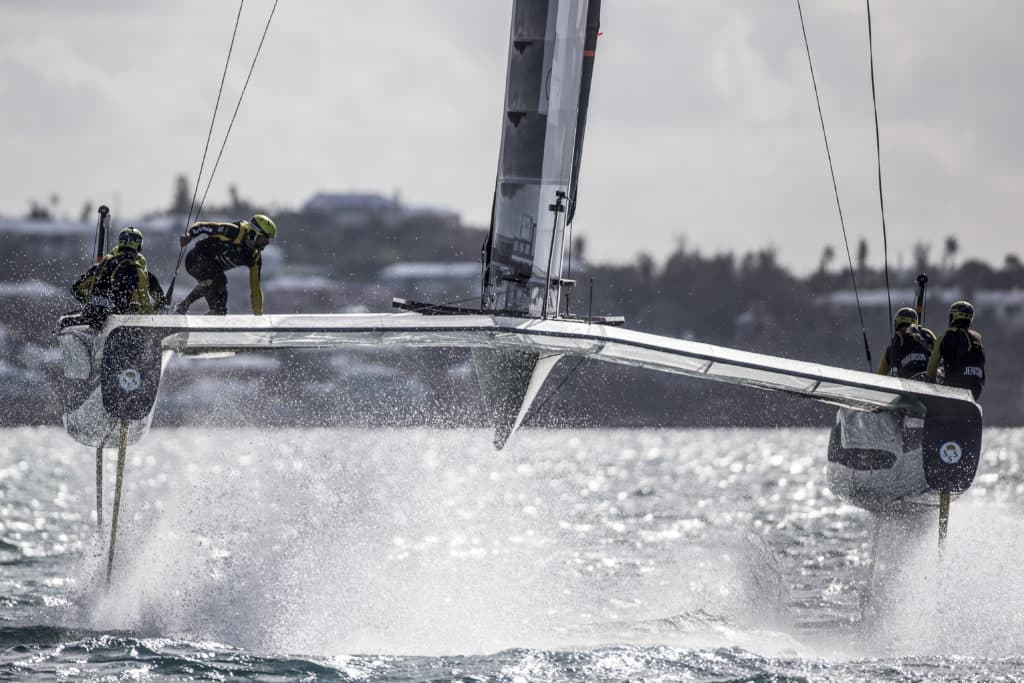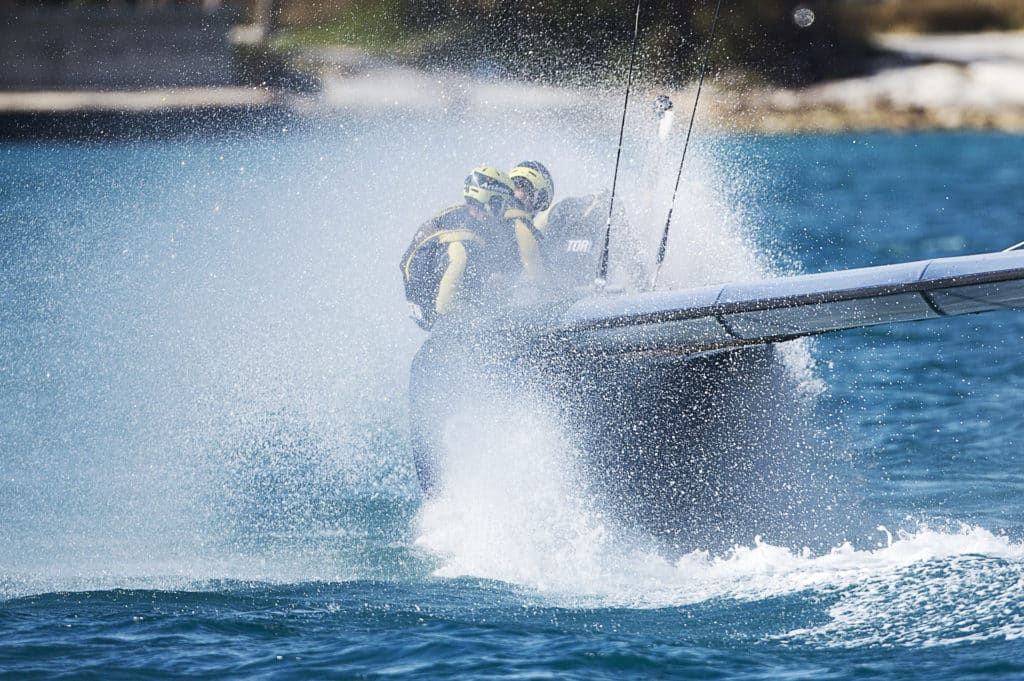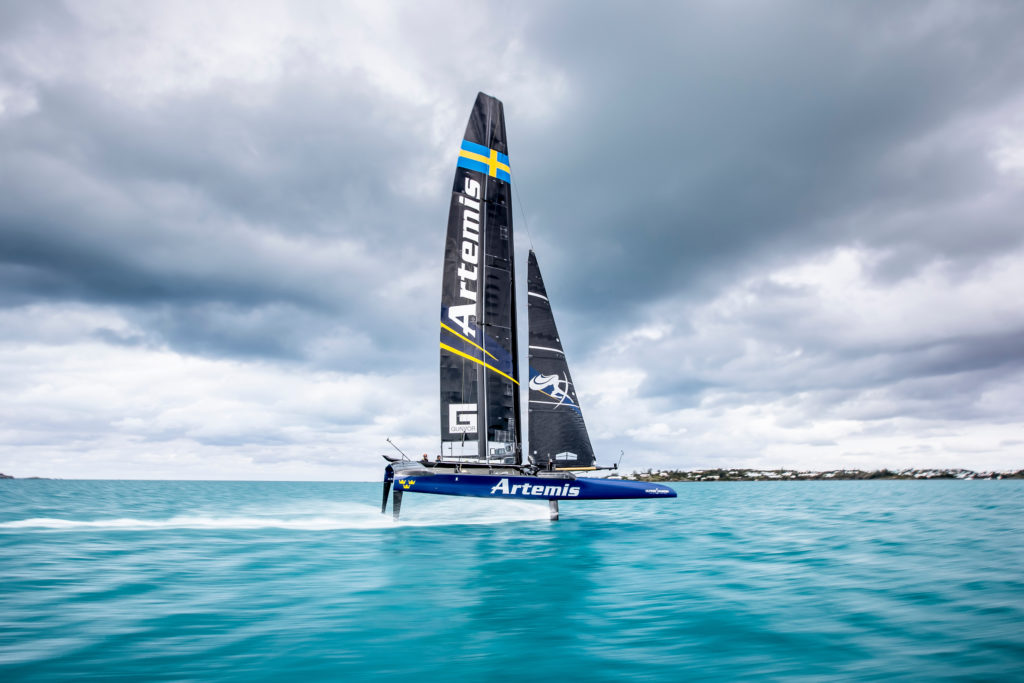The experience of sailing a foiling America’s Cup catamaran is one of unadulterated sensory overload. Even before wind power pressures the towering wing, synapses are firing as the sailors’ minds begin processing the touch, sight, taste, smell and sounds of everyday Cup life. “Inside our noise-canceling headsets, the chatter is constant, but pull them away, and the noise is deafening,” says Artemis Racing helmsman Nathan Outteridge. “When there’s 30 knots of boatspeed upwind, in more than 20 knots of breeze, we’re talking 50 to 60 knots of apparent wind coming across the boat. That’s like sticking your head out the car window going down the motorway while trying to have a conversation with everyone.” And what of the other senses? Outteridge takes us along for the ride.

Touch and Go
Reach for the shroud, target your path to the far cockpit. Go for it. The netting gives underweight as your first foot plants. A push-off springs you forward on a calculated sprint across a moving carpet. Agility, speed and an awareness of what the platform might do beneath you. No one passage is ever the same. The balance point is nowhere; between hulls you’re passing through space, pulled by G-forces, until a shroud is in hand. Drop into the cockpit, plant for balance, palms on the pedestal handles, shoulder muscles tense, then core, quads, calves and toes. Head down. Push. Go hard.
Lucid Vision
Eyes flick, scanning near and far. To instrument panels in the cockpit, on the wing, and on the wrist. There are digits, bar charts and LED lights. Lock in on the leeward bow, only a meter of it beneath the front beam. How far is that bow out of the water? Scan the leeward hull back to the daggerboard. How high are we flying? To the rudder. How much of it is in the water? Back to the display. To the jib, the forestay, the telltales. Scan outside the boat. Where’s the competition? Where’s the wind and the marks? Time to tack. Check the crew: Do they acknowledge the plan? Are they getting across the boat as choreographed? The grinders see nothing but numbers and LED lights. When they finish, they ask, “Did we win?”

Saline Rinse
The hull drops like a runaway elevator, lands with a thud, and explodes the surface into a sheath of water droplets, big and fine. Salt water drips from helmets and cheeks, snaking its way to lips, a bitter cocktail of sodium chloride, perspiration and sunblock. Salt instantly cakes on your face and sunglasses. The next firehose comes with another rinse, another taste of Bermuda’s Great Sound.
Smells Like Team Spirit
The aroma of Bermuda is that of the sea, the night’s rain, a moisture that permeates the island. Enter the Artemis base, into a wall of curing resin, carbon fiber and burning metal from all the welding. It’s the smell of determination, of improvements bound for the boat. It’s the smell of development. Step outside, there’s steak or lamb. The chef is always cooking something good. It’s better to sail after lunch; it’s the best meal of the day. Wash down after sailing — there’s the smell of Friday’s team barbecue drifting across the base. Time to eat again.

Noise Machine
Wind buffets the boat. Foils slice through the water with deafening high-pitched squeals. Foam sizzles from the daggerboard, and the wake pummels the rudder. When their wakes intersect, there’s a roar you can feel in the wheel. Downwind is quieter without the wind noise, but still, shrouds shriek, winches click then growl when a sheet is eased. It’s a constant click, click, click…burp…click, click, click…burp. Chase boats follow at full speed, engines screaming; helicopters thunder 100 feet overhead. From the tactician and his pedestal mate, the sound of their exhaustion: huffing, puffing, grunting.









